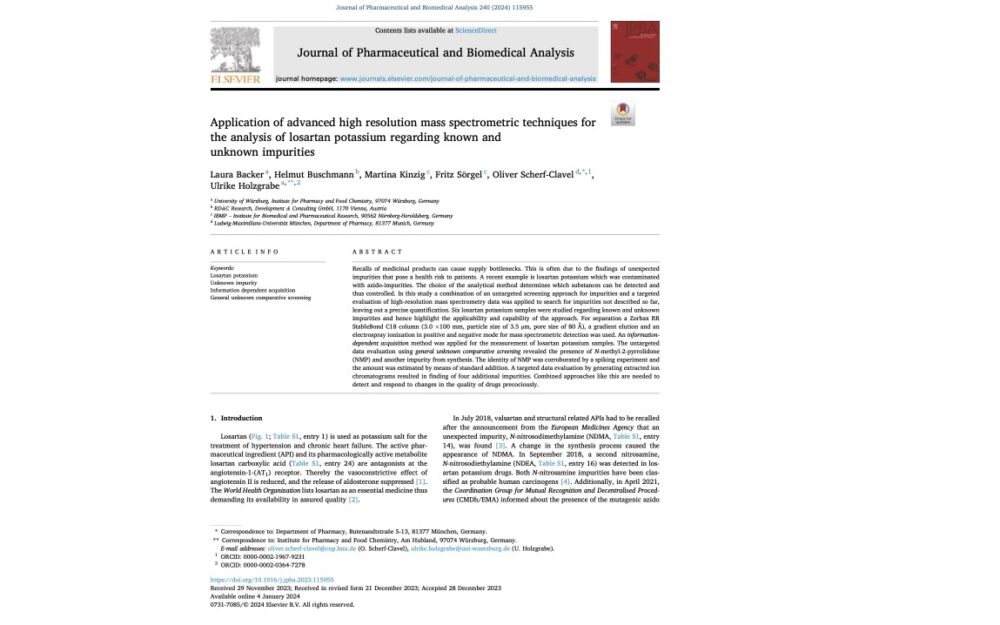Funding project successfully completed: “Detection of unexpected impurities in finished medicinal products”
We are pleased that this project, funded by our foundation and led by Prof. Dr. Oliver Scherf-Clavel, Ludwig Maximilian University of Munich, was successfully concluded with very positive new findings. The results were recently published in the Journal of Pharmaceutical and Biomedical Analysis:

https://doi.org/10.1016/j.jpba.2023.115955
It is not uncommon for the accidental discovery of unexpected contaminants to result in the drug being recalled – and as a result, delivery bottlenecks. Basically, the question of which contaminants can be discovered and therefore controlled is determined by the choice of analytical method. Therefore, quality control procedures often fail to detect unexpected contaminants.
In the experimental work that has now been completed, using losartan as an example, a search was made for previously undescribed contaminants by combining an untargeted screening method with high-resolution mass spectrometry, although the initial focus was only on their qualitative identification. In this way, the presence of N-methyl-2-pyrrolidone (NMP) and another impurity from the synthesis could be revealed. Their identification was confirmed by standard addition experiments. Through a subsequent targeted evaluation using extracted ion chromatograms, four further impurities were detected. Through such combined analysis approaches, changes in the quality of medicines can be detected early and responded to accordingly.
In their conclusion, the authors point out that LC-MS/HRMS approaches such as the one they developed are suitable for initially creating an impurity profile of drugs or excipients and then using this for comparison with later batches. In this way, changes in the impurity profile could be identified quickly and further targeted investigations could be initiated at an early stage. This would improve risk assessment by manufacturers and potentially limit expensive recalls.
Further information can be found under the “Funding Projects” section.

